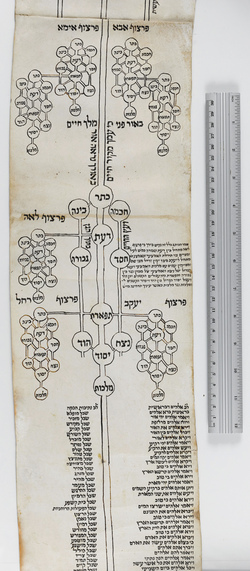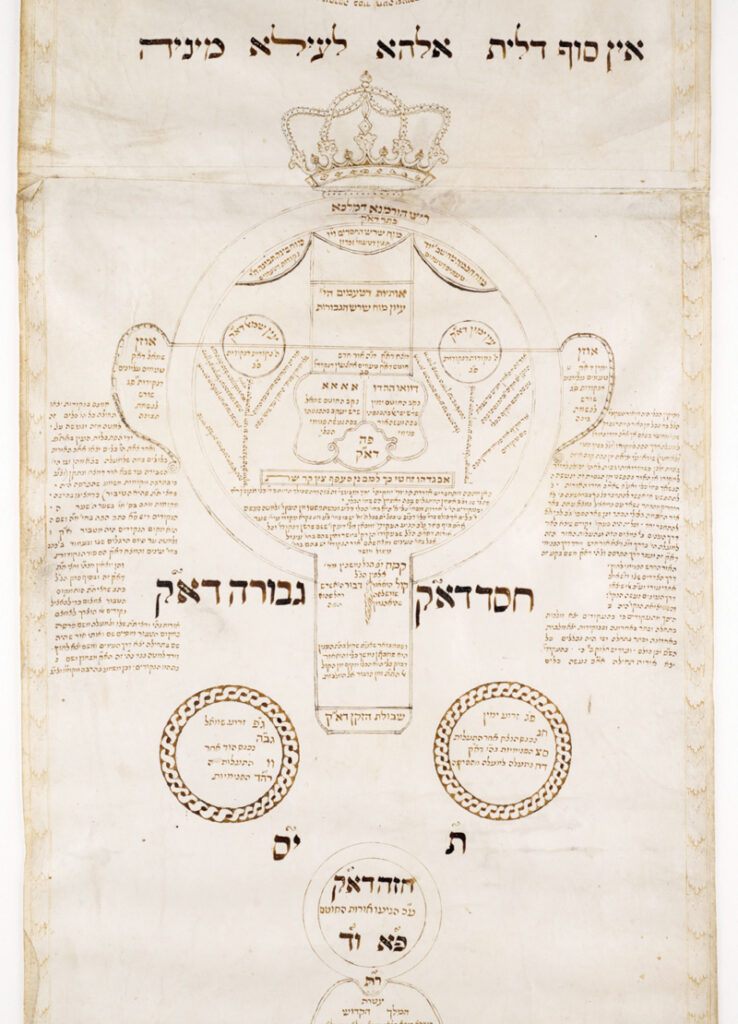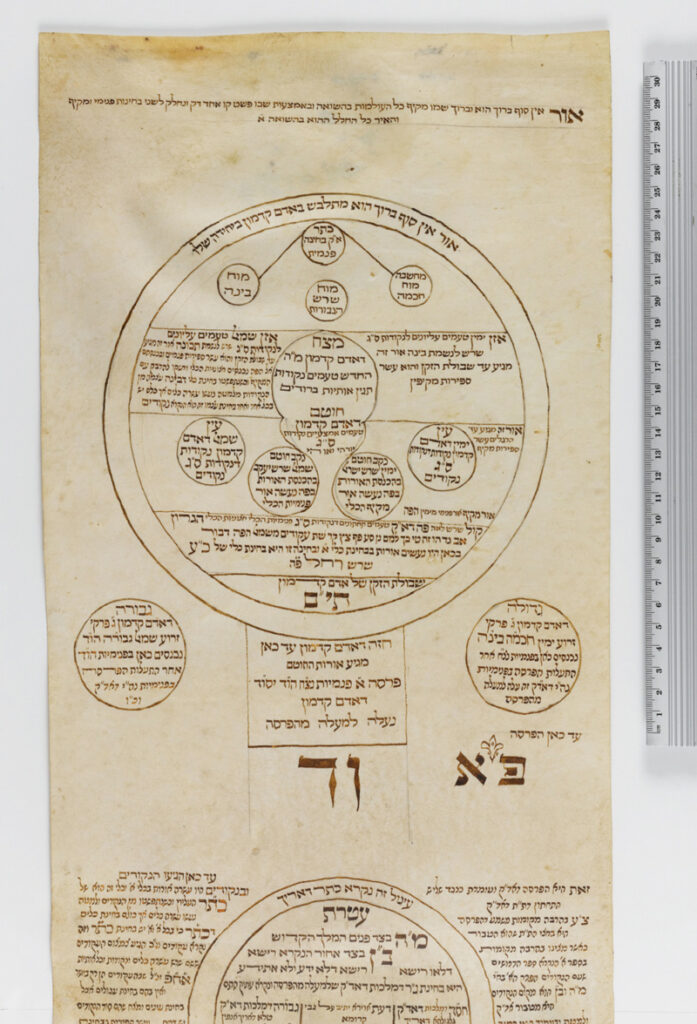Long a center for Kabbalah scholars, the library now has the world’s largest and most important collection of scrolls containing ilanot—diagrams illustrating Jewish esoteric teachings—dating to the 17th century, some over 11 meters long.

(Courtesy of NLI) The National Library of Israel (NLI) has acquired a rare and outstandingly important collection of kabbalistic scrolls. These scrolls, comprising text and diagrams, are called ilanot (trees) or sephiroth trees, and served to illustrate the Jewish esoteric teachings of the Kabbalah. This unique collection includes 36 parchment and paper scrolls with a variety of kabbalistic trees in different sizes and shapes.
For the kabbalists, these trees served as a map describing the divine world in its various forms. Ilanot were essential for learning the structure of kabbalistic teachings of God’s attributes and aspects, understanding the mysteries of the world, and for carrying out the practice of yichud (unification), particular to kabbalistic prayer, and the worship of God. Ilanot are a well-known and accepted kabbalistic tradition dating back to the 14th century.
The NLI collection already included some 25 scrolls of kabbalistic trees. The new addition, acquired from the collector William Gross, whose private Judaica collection is considered the largest of its kind, means the Library will have the world’s largest collection of ilanot, with over 60 scrolls, dating between 1660 and 1920, from Western Europe, Eastern Europe, Yemen, Kurdistan, Iraq and other locales, including some scrolls measuring over 11 meters (~12 yards) in length.

(Credit: Ardon Bar-Hama)
According to Dr. Chaim Neria, curator of the Haim and Hanna Solomon Judaica Collection at the National Library of Israel, the collection is unique in that it represents all of the different types of kabbalistic verses. “The Gross collection is extraordinary for its scholarly importance and sheer diversity, containing various examples of original Hebrew works that have great historical, research and aesthetic value. It contains beautiful and rare ilanot, some illuminated with colors, created by kabbalists from all over the Jewish world, that are both a visual and spiritual experience.”

Dr. Raquel Ukeles, head of collections at the National Library of Israel said: “The library has long been a world center for Kabbalah scholars and researchers. The library houses rare kabbalistic manuscripts and books, and our Gershom Scholem Collection of Kabbalah and Hasidism has the most comprehensive collection of Kabbalah literature and research materials. We are delighted that these rare items will be an integral part of our national memory, preserved on the one hand but also digitally and physically accessible on the other. They will receive the recognition they deserve as distinctively Jewish works, and as rare treasures at the National Library of Israel.”

Shai Nitzan, rector of the National Library of Israel said: “The kabbalistic trees are among the one-of-a-kind collections we are acquiring in advance of the National Library of Israel’s move to its new location. We are committed to enriching the library with items that will expand our collections, and making them accessible to the public, reinforcing our vision to serve as the curator of the spiritual treasures of the Jewish people.”
The acquisition was made possible thanks to the Haim and Hannah Solomon Fund and the William Davidson Foundation.










